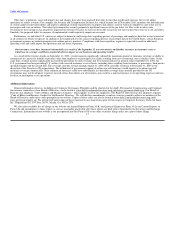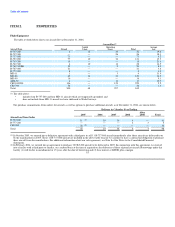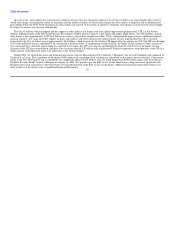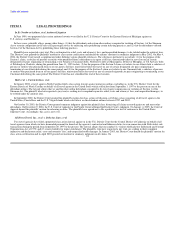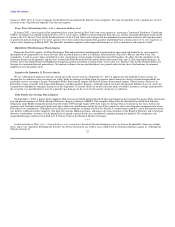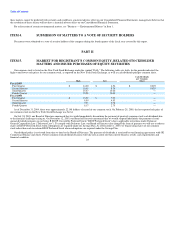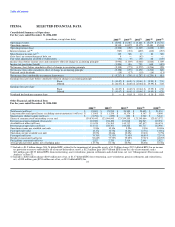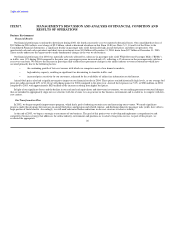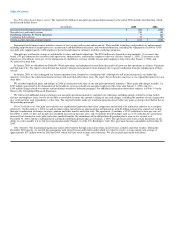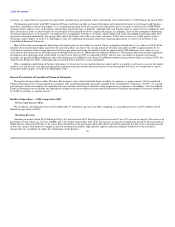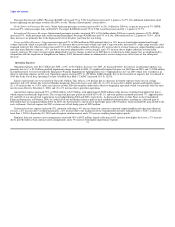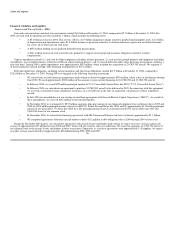Delta Airlines 2004 Annual Report Download - page 31
Download and view the complete annual report
Please find page 31 of the 2004 Delta Airlines annual report below. You can navigate through the pages in the report by either clicking on the pages listed below, or by using the keyword search tool below to find specific information within the annual report.
Table of Contents
cost reduction targets and the actions we should take to seek to achieve these targets. Key elements of our transformation plan include:
• Redesigning our Atlanta operation from a banked to a continuous hub to increase capacity with the same number of aircraft, to improve
reliability and to reduce congestion. We implemented this initiative in January 2005.
• Dehubbing our Dallas/Ft. Worth operations and redeploying aircraft used in that market to grow our hub operations in Atlanta, Cincinnati
and Salt Lake City, as well as offering new destinations and expanded frequencies in key focus cities such as New York City and Orlando.
We implemented this initiative in January 2005.
• Growing Song, our low-fare operation, to 48 aircraft by converting 12 Mainline aircraft to Song service. In January 2005, we announced
plans for Song to begin nonstop service from New York-JFK to Los Angeles, San Francisco, Seattle, San Juan and Aruba.
• Reducing fleet complexity by retiring up to four aircraft types in approximately four years and increasing overall fleet utilization and
efficiency.
• Eliminating 6,000 to 7,000 non-pilot jobs by December 2005, lowering management overhead costs by approximately 15% and reducing pay
and benefits, including an across-the-board 10% pay reduction for non-pilot employees effective January 1, 2005.
• Reducing significantly our pilot cost structure. In November 2004, we entered into an agreement with our pilots that will provide us with
$1 billion in long-term, annual cost savings.
• Creating incentive programs for U.S.-based employees (excluding officers and director-level employees), which include (1) stock options;
(2) profit sharing if our annual pre-tax income exceeds specified thresholds; and (3) monthly payments of up to $100 per employee based on
our customer satisfaction and operational performance ratings. In November 2004, we granted stock options to purchase a total of 62 million
shares of our common stock to approximately 60,000 employees, including pilots.
• Updating and upgrading customer products and services, including aircraft interiors and website functionality, and continuing two-class
service in Mainline operations.
Our transformation plan is intended to deliver approximately $5 billion in annual benefits by the end of 2006 (as compared to 2002) while also improving
the service we provide to our customers. By the end of 2004, we achieved approximately $2.3 billion of the $5 billion in targeted benefits under our profit
improvement program. We have identified, and begun implementation of, the following key initiatives to obtain the remaining $2.7 billion in targeted
benefits, which we believe we are on track to achieve by the end of 2006:
(in millions) 2005 2006
Non-pilot operational improvements $ 1,075 $ 1,600
Pilot cost reductions 900 1,000
Other benefits 135 125
Total $ 2,110 $ 2,725
27


